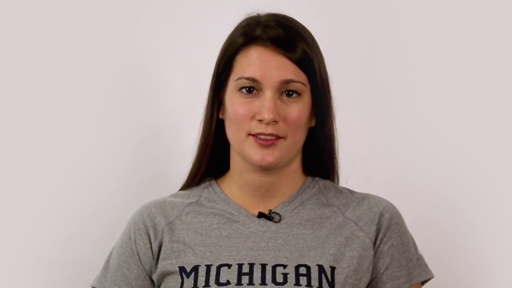3.1 Self-talk in practice
According to Hardy (2006) there are two main types of self-talk:
- instructional (or cognitive) self-talk – this tells or reminds people what to do (e.g. ‘relax’), and
- motivational self-talk – this encourages people in some way (e.g. ‘I can do this’).
It is suggested that instructional self-talk is effective in enhancing or directing attention, while motivational self-talk is effective in increasing confidence and motivation and regulating effort. Below are some examples of motivational and instructional self-talk used by our case studies Lois and Travis:
When the physio is about to do some painful treatment on my Achilles, I take a deep breath and say the word ‘relax’ to myself.
(Lois – instructional self-talk)
Every morning now I wake up and say ‘I will get back to fitness’ to myself.
(Travis – motivational self-talk)
When I’m coaching at the track I look at the other athletes running fast and think ‘I will be back running with them soon’.
(Lois – motivational self-talk)
Activity 3 Self-talk: have a go!
This activity is divided into two parts. For the first part you are going to watch a video showing how someone has learned to use self-talk. In the second part you are going to complete a self-talk exercise.
- Watch the video below in which swimmer Kally Fayhee discusses how she uses a self-talk strategy of identifying and reframing negative thoughts. What are the stages of strategy she describes?

Transcript: Video 2
[MUSIC PLAYING]
[MUSIC PLAYING]
[MUSIC PLAYING]
Discussion
- In the video Kally Fayhee describes three main stages:
- paying attention to her thoughts (self-awareness)
- slowing down and thinking about what she would say to a friend (rationalising), and
- reframing her thought into a positive one (identify and reframe).
- Think of a time when you have said negative things to yourself (for example, when you have been lacking confidence about a particular task, or when you have been injured). Write down some of the negative statements you have said to yourself in the first column of the table below, then write down a counteracting positive statement that you could have said to yourself instead.
| Negative self-talk | Positive self-talk |
|---|---|
Discussion
- It’s a useful exercise to think about when you yourself might be using negative self-talk and to consider the impact those negative thoughts have on you. Being able to counteract negative statements with positive statements is a useful tool. Try using this technique next time you catch yourself saying negative things to yourself. Injury is a time when negative thoughts can be common and therefore this can be a useful strategy to counteract them.
